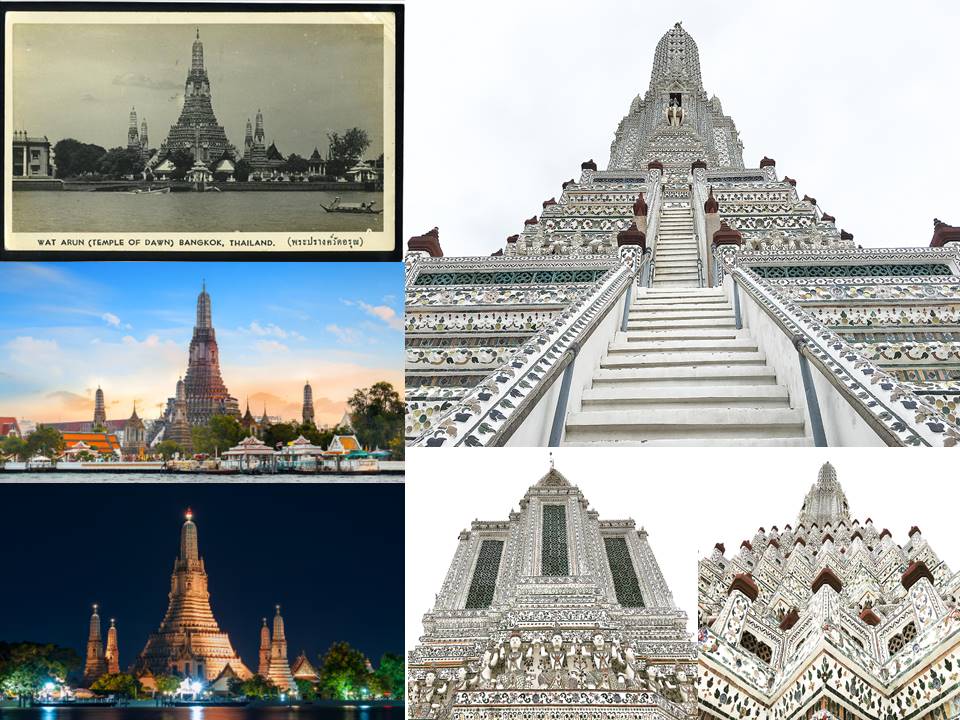Wat Arun, one of Bangkok’s most famous landmarks, has been existed since the time of the Ayutthaya Kingdom. It’s known as Wat Makok at that time. According to the historian (Prince Damrong Rajanubhab), the temple was shown in French maps during the reign of King Narai (1656–1688). The temple was renamed Wat Chaeng by King Taksin when he established his new capital of Thonburi near the temple, following the fall of Ayutthaya. The temple enshrined the Emerald Buddha image before it was transferred to Wat Phra Kaew on the river’s eastern bank in 1785.
The main feature of Wat Arun is its central prang (Khmer-style tower). It is somewhere between 70 and 80 meters tall, making it the tallest spire in all of Thailand
The central prang symbolises Mount Meru of the Hindu cosmology, is topped with a seven-pronged trident, referred to “Trident of Shiva”. In the Buddhist iconography, the central prang is considered to have three symbolic levels—base for Traiphum indicating all realms of existence, middle for Tavatimsa where all desires are gratified and top denoting Devaphum indicating six heavens within seven realms of happiness.
The corners are surrounded by four smaller satellite prang which devoted to the wind god, Phra Phai. The demons (yaksha) at the entranceway to the ubosot are from the Ramakien. The white figure is named Sahassa Deja and the green one is known as Thotsakan, the Demon Rāvana from Ramayana.
